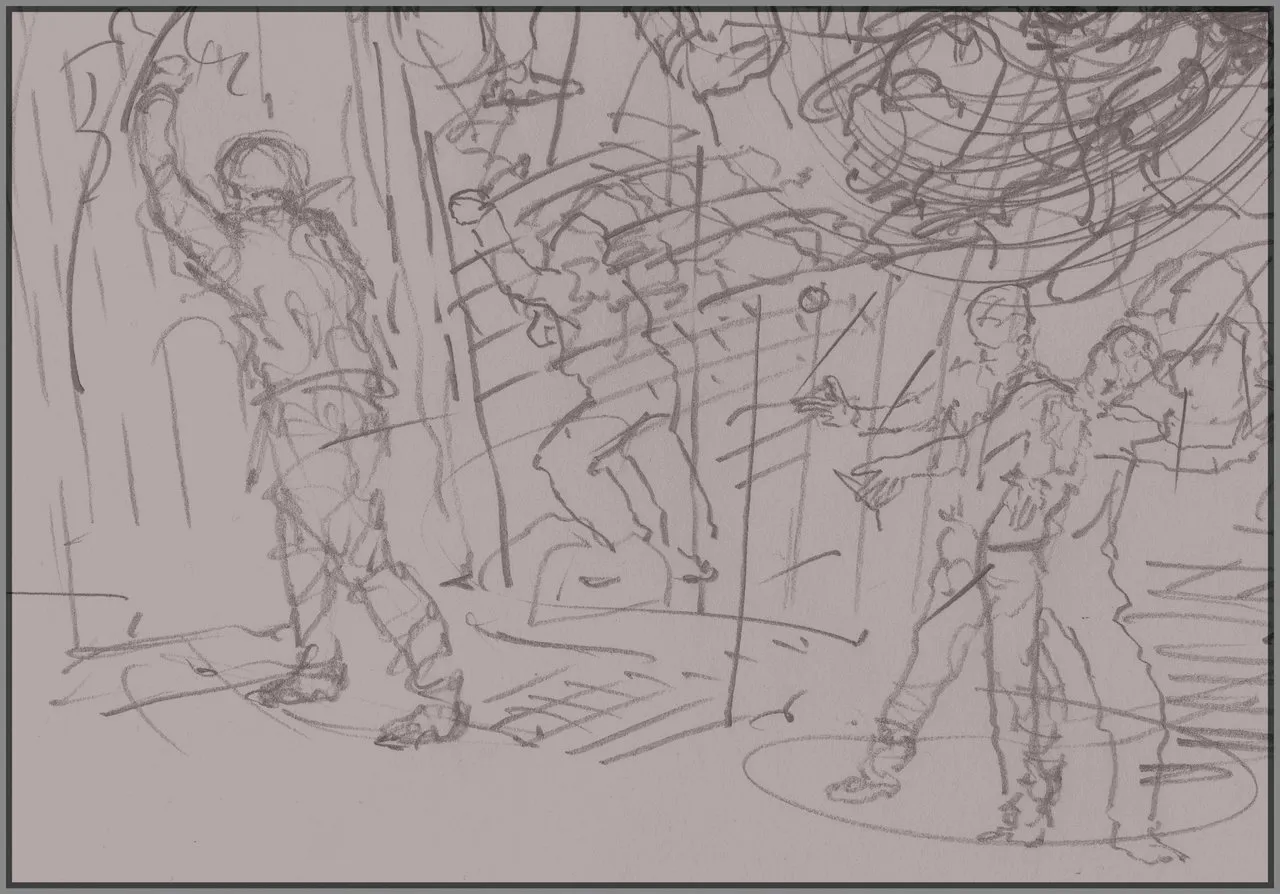
In the preceding article in this series, we saw how James Joyce originally intended his elaboration of the sketch Here Comes Everybody to be the opening chapter of his new and as yet unnamed novel. But in order to facilitate the serialization of his Work in Progress in Eugene Jolas’ avant garde magazine transition, Joyce dismembered this mock-heroic tale of HCE—sometimes known as the Humphriad—into three separate chapters. And with the drafting of an introductory chapter to the novel—Riverrun—the three parts of the Humphriad eventually became Book I, Chapters 2-4 of Finnegans Wake (I.2-4).
This, however, is not to deny that each of these chapters is a self-contained subunit in its own right, with its own narrative arc, structure, and literary character. When Joyce partitioned the Humphriad into three acts, he made certain alterations to each of the subunits in order to make the chapter breaks between them less abrupt:
In the spring of 1927 in the fair copy of the first typescript all the sections had been drafted and their sequence established. It only remained for Joyce to determine their final segmentation into episodes for publication in transition and to make changes that would organize their proper symmetries and echoes. (Crispi & Slote 87)

The first of these three chapters followed the career of HCE as he rose meteorically in the world following a roadside brush with royalty, only to become the butt of public gossip and see his reputation undergo an equally spectacular fall. The chapter concluded with the singing of Hosty’s Rann, The Ballad of Persse O’Reilly, a scurrilous lampoon that paints HCE in an altogether different light than he himself would have chosen.
Book I, Chapter 2—the Humphriad II—follows on from this performance without losing a beat. In musical terminology, the Italian word attacca is written at the end of a movement to indicate that the following movement should follow without a break. I’m surprised Joyce did not think of this, as Hosty’s Rann is an attack on HCE. The opening words of I.3, Chest Cee! refer to Hosty’s singing voice. Joyce borrowed this allusion from the Souvenir of the Twenty-Fifth Anniversary of the Opening of the Gaiety Theatre, the king’s treat house in which HCE was simultaneously fêted and ridiculed in the previous chapter:
Old-fashioned Italian Opera, properly so-called, had long become almost a thing of the past, and strange, perhaps, as it may appear, there are many left who still lament it. After all, who that has seen him can ever forget the operatic tenor of the old school? Some may even think conventional opera would be worth preserving, if only for the sake of his few survivors—the gentleman who so strangely and wonderfully used to work himself up to the point of delivering his famous chest C. One always knew when it was coming. Its owner would take a few strides towards the back of the stage, accumulating lung power the while, and then return to the footlights to expend it for the benefit of the audience and the glory of himself. (J B H 31)

But the Humphriad II is of quite a different character from the preceding chapter. The Humphriad I was essentially a narration—an account of what happened to HCE with various additions that accrued in the telling. The Humphriad II, however, is an investigation into Der Fall Humphreys—a German expression that might be translated as both The Fall of HCE and The HCE Case. The former chapter spoon-feeds us the “truth” and expects us to swallow it without question. The latter tries to sift fact from fiction and get at the real “truth”.
In an earlier article, we saw that much of the narrative of Finnegans Wake is investigative in nature. The Four Old Men, especially, seem to be forever holding “Inn Quests” on the HCE affair. We were given a foretaste of this in the opening chapter of the book, where the Four investigate the death and resurrection of Tim Finnegan, the hapless hero of the Irish-American ballad Finnegan’s Wake.
There are no compelling reasons, however, to regard the Four Old Men as the inquiring voices responsible for the Humphriad II. The tone of voice is Edwardian and English (Gordon 129). Joyce drafted this chapter before I.1 and before the other chapters in which the Four figure prominently as historians of the Wake: II.4, III.1, III.3 and III.4. In this chapter, it is the organs of the mainstream media—newspapers, television, radio, movies—that carry out the inquiry into the HCE affair. What better specimen of humanity to air the dirty linen of the Earwicker family than muckraking journalists?
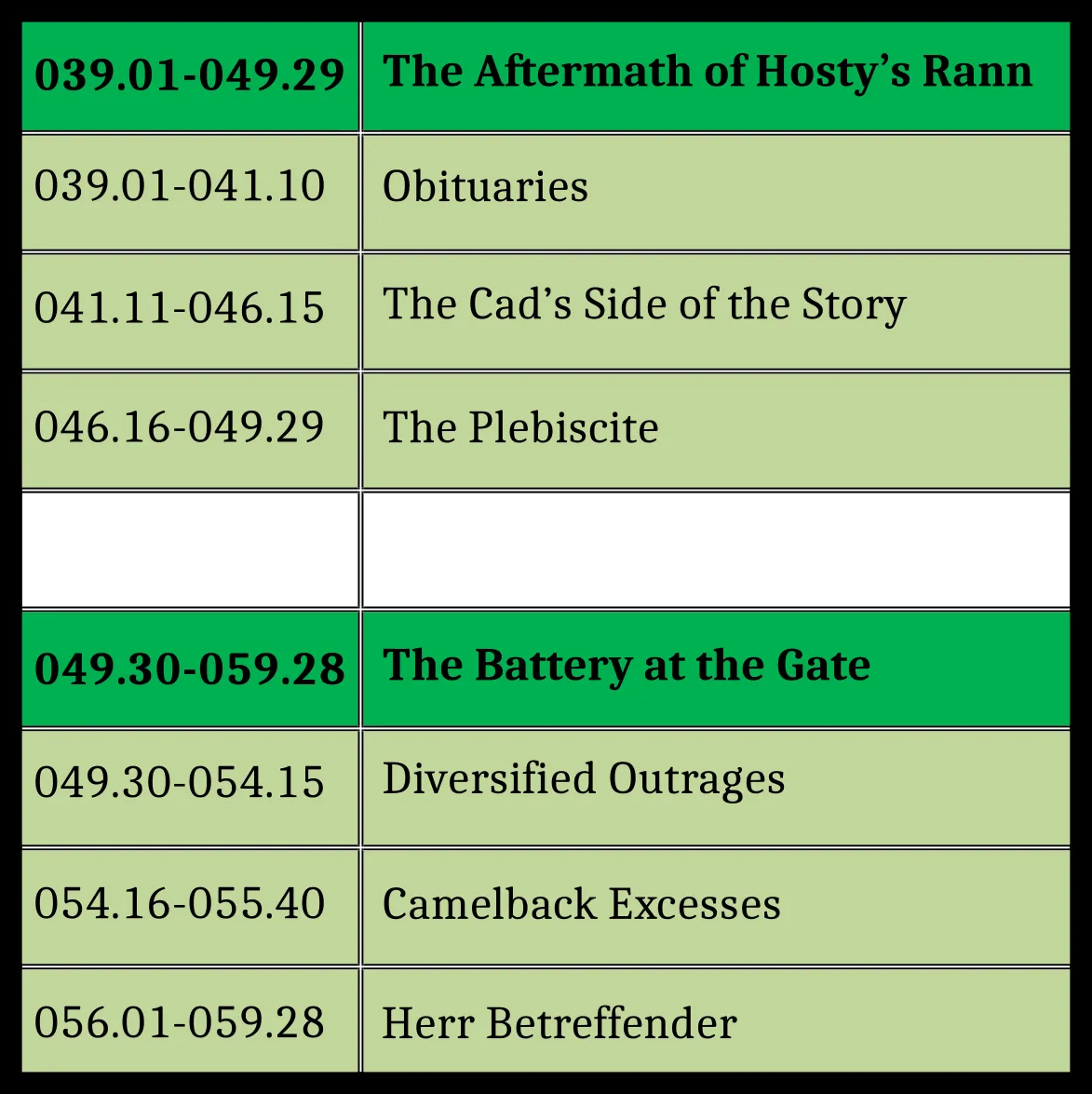
Structure
The structure of the Humphriad II was sketched out in an earlier article. In that analysis, we divided this chapter into two sections, each of which was comprised of three episodes:
- The Aftermath of Hosty’s Rann The first section takes up the story at the point where the preceding chapter left it down—ie at the conclusion of Hosty’s performance—and recounts the aftermath of that world première. The dramatis personae all come to uncertain ends, and the first episode in this section reads like a series of newspaper obituaries for them. The second episode is much less transparent. It rehashes HCE’s Crime in the Park, which was itself a retelling of HCE’s encounter in the park with the Cad with a Pipe, which was in its turn a retelling of HCE’s roadside encounter with the King, which opened the whole affair. I agree with Bill Cadbury, Professor Emeritus of English at the University of Oregon, that this second episode represents the Cad’s side of the story. This is then followed by the third episode, the Plebiscite, in which members of the public are asked for their opinions on the HCE affair. Joyce, however, drafted these three episodes out of order, as Cadbury explains:
Joyce ... did not draft the subunits of 3§1 [The Aftermath of Hosty’s Rann] in the order in which they were published. What becomes its final part is drafted first, the section usually called the “plebiscite” ... in which we find public responses to the accusations made in the Rann that initially were planned immediately to precede them. These are responses to HCE’s misconduct with “the two slaveys” and “the 3 drummers,” and the section as first written in 1923 ends with a sketch of the fates of “the 2 maids” ...
But after writing it Joyce decided to precede the plebiscite on HCE with an account of the obscure fates of the first responders to him, the Rann-makers, and so he wrote what becomes [The Obituaries] ... The plebiscite had begun by announcing the theme of decay and even transformation of information: “The data, did we possess them, are too few to warrant certitude” ... And in the new unit Joyce emphasized that, even before the plebiscite gossip, information is decaying as it passes through characters with different motivations. Information about the characters themselves also slips: the narrator ends this part wondering if “the reverend, the sodality director” was in fact “the cad with a pipe encountered by HCE” ...
With the first drafts completed of the subunits that he intended to succeed each other directly, Joyce copied them, adding to the copy, however, a long addition [The Cad’s Side of the Story] ... to come between the fates of the Rann-makers and the fate of HCE’s reputation as detailed in the plebiscite. The long addition takes its cue from the mistaking of the sodality director for the cad (though confronters of and commentators on HCE are always in some sense the cad), and the addition is the cad’s retelling of the original encounter in so different a style that it too exemplifies the decay of information that at first seemed clear. (Crispi & Slote 69)

- The Battery at the Gate In the second section of the Humphriad II the attack on HCE’s reputation, which up to now has been merely verbal, takes the form of a physical attack on his person and property. The three episodes in this section are just variations of one another and may have been drafted by Joyce as alternatives. Bill Cadbury, however, regards Camelback Excesses and Herr Betreffender as constituting a single episode (3§3), as they were drafted together, with Diversified Outrages identified as 3§2:
It seems most likely that Joyce drafted the [episodes] as alternatives, only later deciding to use both rather than to choose between them and putting them in the reverse order from that in which he drafted them.
Joyce began with what will become 3§3 ... and wrote that “First these outrages” that we have been hearing about may have been “instigated” by the “rushy hollow heroines” ... who had just been referred to at the end of the plebiscite ...
But after this first paragraph Joyce continued to write as if the “these” of “these outrages” referred not to the [Diversified Outrages] that preceded but to those that he is about to describe [ie the Camelback Excesses], beginning his next paragraph “First, there was a gateway” [see RFW 055.28] ... He presents an outrage at that gateway, a violent attack on HCE culminating in “threats and abuse” ... and the throwing of stones before the attacker leaves ...
But after first-drafting what becomes 3§3 [Camelback Excesses & Herr Betreffender], Joyce seems to have tried another version [Diversified Outrages] ... of the “outrages” that carry so much thematic weight and characterize both what HCE does and what is done to him ...
This second outrage, like the first version drafted before it, centers on an attack at the “gateway” ...
In sum, both “outrages” sections of chapter 3 mobilize the same thematic materials ... But despite a certain awkwardness in the transition out of the plebiscite, Joyce must have decided to use both, as it became clearer that the echoing and apparent repetition of episodes was to be a central aspect of his structure, carrying its theme. (Crispi & Slote 71-75)
Parallels
In Finnegans Wake, Joyce tells the same story over and over again. This is a reflection of both Giambattista Vico’s philosophy of human history as a repeating cycle and Joyce’s personal take on that philosophy, according to which the repeating pattern of World history can also be discerned in the history of a single family in Chapelizod, Dublin:
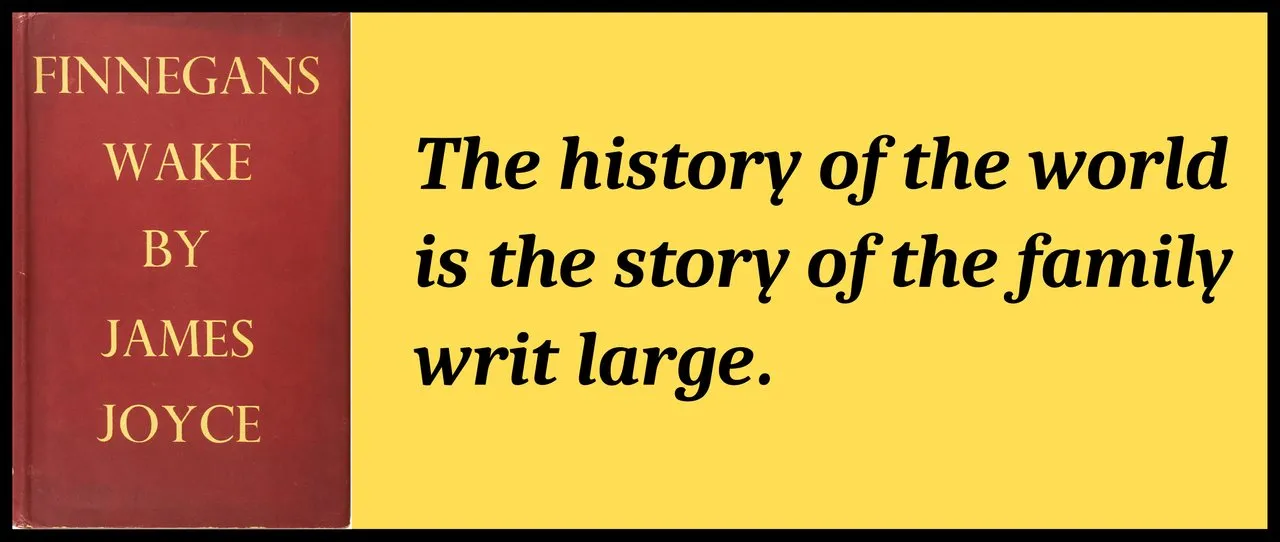
There are, therefore, many parallels between the various episodes that make up the Humphriad. The same events are described in different ways, but the recurrence of familiar details leaves the reader in little doubt that he is going in circles, like Patrick Morkan’s horse Johnny in The Dead, who becomes locked in orbit about the statue of King Billy on College Green (Joyce 1914:257-258). In the Humphriad I, the following sequence of events is described:
HCE, coming from his garden, encounters the King on the street outside his public house.
HCE is lampooned in the Gaiety Theatre in South King Street (kingstreat house).
HCE encounters the Cad with a Pipe in the Phoenix Park.
An evolving account of this encounter passes along a chain of gossips.
HCE is lampooned in the streets of Dublin by Hosty’s Rann.
In the Humphriad II, we have the following:
Hosty’s Rann is released throughout the kingsrick of Humidia (ie the Kingdom of Ireland)
We read in the newspapers the Obituaries of the gossips.
The Cad relates his side of the encounter with HCE in the park.
HCE is lampooned by the public in the Plebiscite.
The Battery at the Gate: HCE is accosted by someone on the street outside his public house.
Therefore—though this might be a bit of a stretch—it can be argued that the five elements of I.2 are recapitulated in reverse order in I.3.
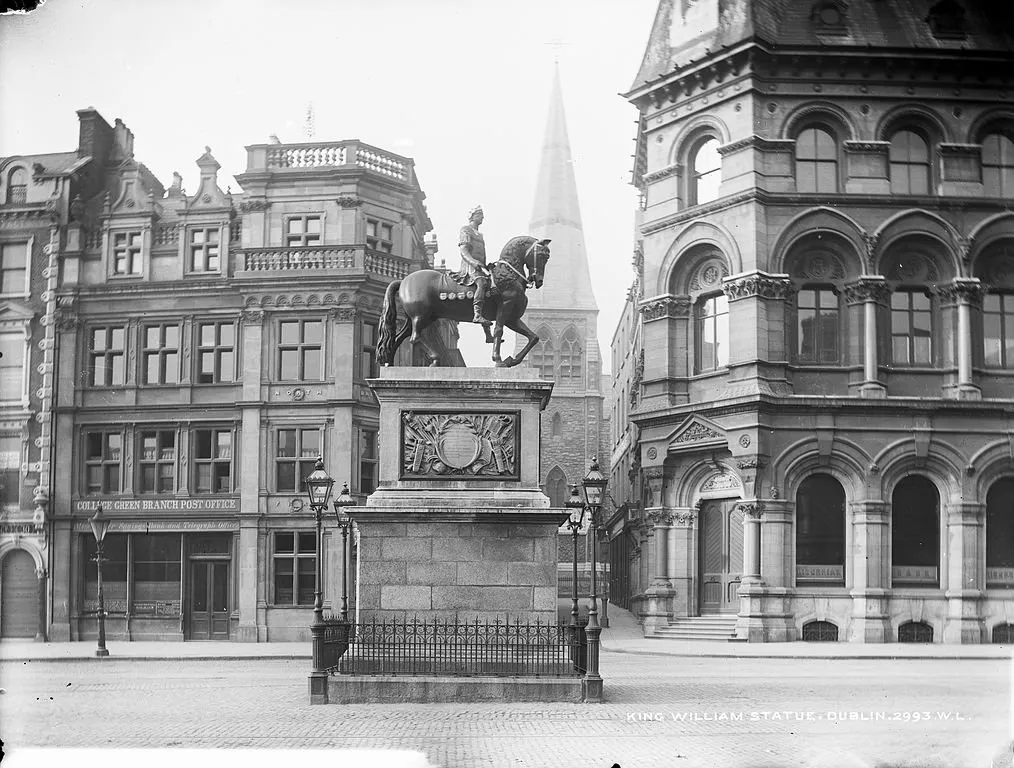
Note how Joyce repeats certain motifs in order to associate these diverse events with one another. For example, take the royal connection:
HCE encounters a king outside his inn.
HCE is lampooned in the Gaiety Theatre, which is on South King Street.
Hosty’s Rann is sung To the added strains (so peacifold) of his majesty the flute, that onecrooned king of inscrewments [RFW 034.34-35].
With Hosty’s Rann, Therewith was released in that kingsrick of Humidia a poisoning volume of cloud barrage indeed [RFW 039.04-05].
And these are just some of the more prominent examples of this device. Other motifs that Joyce uses to knit everything together into one big patchwork quilt include historical figures (eg Daniel O’Connell, the Duke of Wellington, King Billy, Oliver Cromwell), geographical locations (eg garden, public park, gateway, public street), weapons (guns, fenders, bottles, stones), etc.
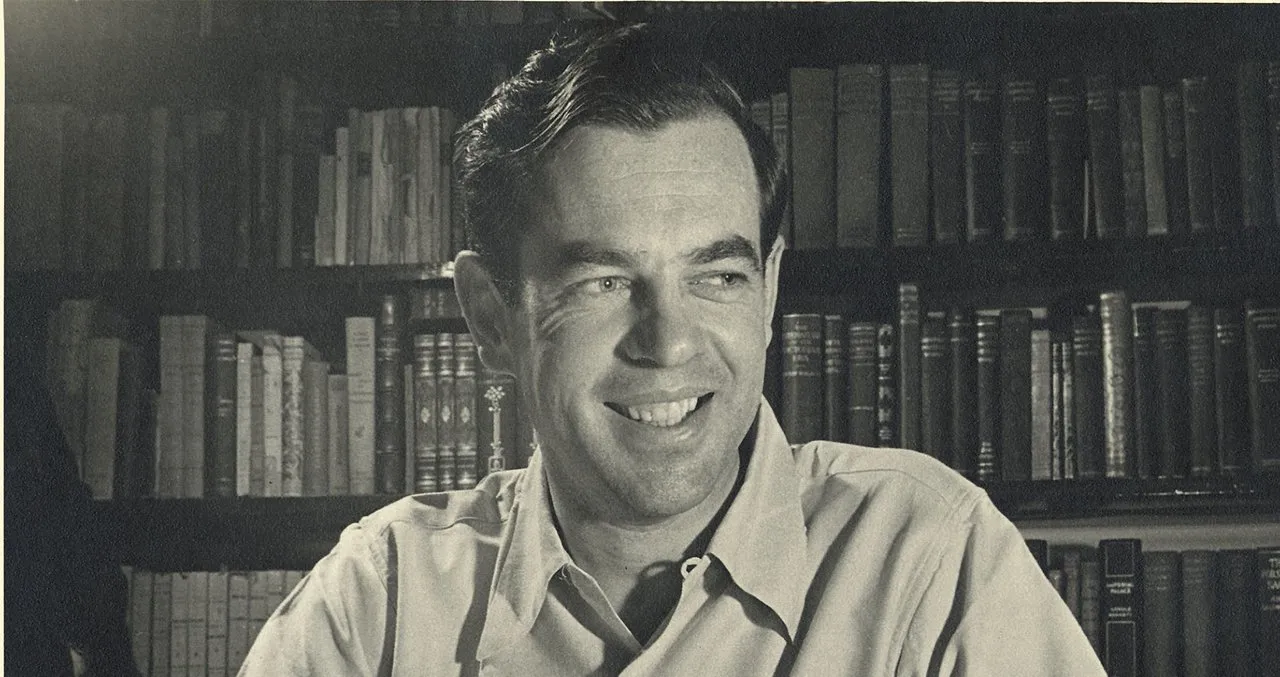
HCE: His Trial and Incarceration
Although I.3 repeatedly rakes over the ashes of I.2, it also advances HCE’s story in new and interesting ways. In their Skeleton Key to Finnegans Wake, Joseph Campbell and Henry Morton Robinson refer to this chapter as:
HCE—His Trial and Incarceration (Campbell et al 63)
In the dreamworld of Finnegans Wake, however, incarceration is synonymous with death. On some mystical or telestic level, it makes no difference whether one is imprisoned in a cell, asleep in a bed, nailed into a coffin, or buried in a grave. These all amount to the same thing: one’s day is done and one has been removed from the world of living men.
The trial—or, rather, judicial enquiry—which leads to HCE’s death|incarceration|burial is conducted by the Four Old Men, who have been silent up to here (RFW 045.36 ff). But this is just a foretaste. The principal trial in the Humphriad is reserved for the next chapter, in which the accused will be a man called Festy King. Needless to say, this will be the same old story again.
Weather
The keynote of I.3 is the obscurity of the past: recovering the true history of HCE is all but impossible. This obscurity is represented by numerous references throughout the Humphriad II to bad weather. At the commencement of this chapter it is foggy, and at its conclusion it is raining. Between these two extremes, the conditions are described variously as nebulous, showery, or humid, the visibility is generally wet and low, and the day is damp.
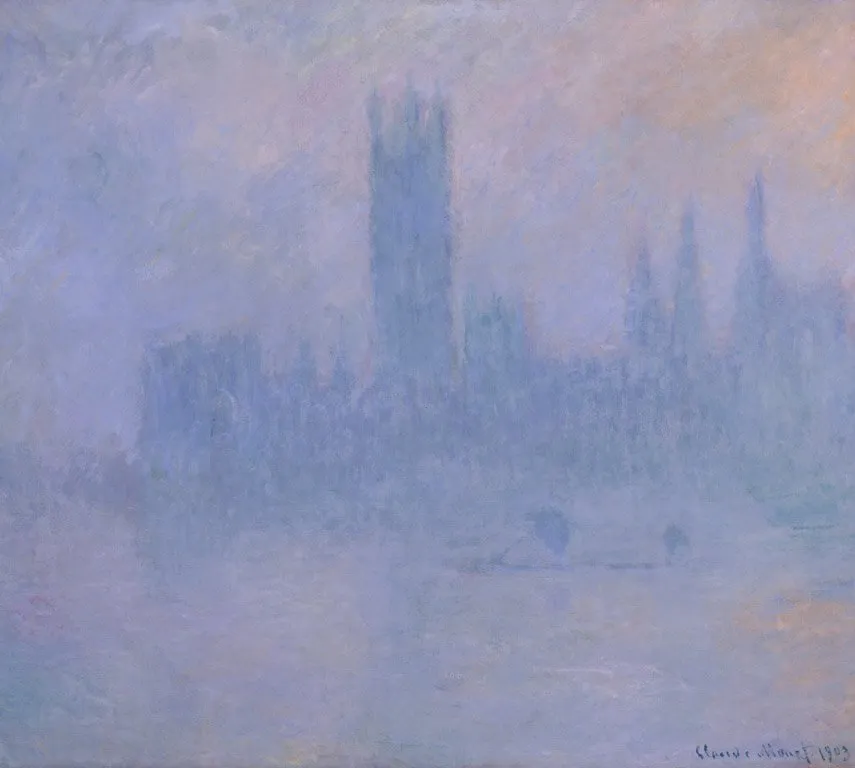
England
John Gordon, Professor Emeritus of English at Connecticut College, has referred to I.3 as the Wake’s ‛English’ chapter:
The scene and characters tend to be English. HCE’s ‛regifugium persecutorum’ is now England, and he is uncommonly, and unguardedly, proud of his British connections ... so much so that at the chapter’s end the one hundred and eleven epithets directed against him are ... equated with the one hundred and eleven anti-English votes of the Irish Parliament against the Act of Union. Most of all, the chapter is stereotypically ‛English’ in its voice. (Gordon 129)
The foggy weather on the first page evokes the pea-soup “particulars” of Victorian and Edwardian London, and this is confirmed by the allusion to Blackfriars. Liverpool is evoked in the final paragraph. And a few other English towns are also referred to: St Just and St Austell in Cornwall, for instance.
What is the rationale behind this? Why should this particular chapter be an English one? Remember that when Joyce first drafted these pages, he had not yet decided to partition Here Comes Everybody into three separate chapters.
The only reason I can suggest is that it has something to do with the English origin of the sketch Here Comes Everybody. Although it appears that Joyce began to draft this vignette in Paris in August 1923, he conceived of it when he was holidaying in Bognor, near the southeast bluffs of the stranger stepshore (RFW 041-40 f). It was there, in England, that he first came across the surname Earwicker—people of this name were buried in the graveyard of St Mary Our Lady’s Church in nearby Sidlesham. He may even have begun to sketch out Here Comes Everybody before his return to France around the 17th of August (Norburn 110).

Style
For the most part, the Humphriad is one of the most transparent parts of Finnegans Wake. Novices generally find these three chapters the easiest to read and comprehend, and they often lament the fact that Joyce did not write the rest of the book in the same vein. On the contrary, as he worked his way deeper and deeper into the novel, his style became more and more layered and incomprehensible.
Having said that, there is also an undeniable increase in difficulty in the Humphriad itself. I find I.3 noticeably more opaque than I.2, and I.4 more opaque again. As we progress, the black shroud of night falls and the darkness becomes more and more impenetrable.
And that’s a good place to stop.
References
- Joseph Campbell, Henry Morton Robinson, Edmund L Epstein (editor), A Skeleton Key to Finnegans Wake, New World Library, Novato CA (2005)
- Luca Crispi & Sam Slote (editors), How Joyce Wrote Finnegans Wake: A Chapter-by-Chapter Genetic Guide, The University of Wisconsin Press, Madison, WI (2007)
- John Gordon, Finnegans Wake: A Plot Summary, Syracuse University Press, Syracuse NY (1986)
- J B H et al, Souvenir of the Twenty-Fifth Anniversary of the Opening of the Gaiety Theatre: 27th November 1871, Gaiety Theatre, Dublin (1896)
- James Joyce, Dubliners, Grant Richards Ltd, London (1914)
- James Joyce, Finnegans Wake, The Viking Press, New York (1958, 1966)
- James Joyce, James Joyce: The Complete Works, Pynch (editor), Online (2013)
- Roger Norburn, A James Joyce Chronology, Palgrave Macmillan, London (2004)
- Danis Rose, John O’Hanlon, The Restored Finnegans Wake, Penguin Classics, London (2012)
- Giambattista Vico, Goddard Bergin (translator), Max Harold Fisch (translator), The New Science of Giambattista Vico, Cornell University Press, Ithaca NY (1948)
Image Credits
- The Battery at the Gate (RFW 056.01-059.04): © Clinton Cahill, Fair Use
- James Joyce and Eugene Jolas in 1936: Copyright Unknown, Fair Use
- The Gaiety Theatre (South King Street): © The Gaiety Theatre, Fair Use
- Bill Cadbury: © Michael McDermott (photographer), Fair Use
- Finnegans Wake in a Nutshell: Faber and Faber Limited, Public Domain
- King Billy’s Statue in College Green: National Library of Ireland, Public Domain
- Joseph Campbell: Copyright Unknown, Fair Use
- Houses of Parliament in the Fog (Monet): Claude Monet (artist), High Museum of Art, Atlanta, Public Domain
- Graveyard of St Mary Our Lady’s Church, Sidlesham: © Basher Eyre, Creative Commons License
Useful Resources
- Joyce Tools
- FWEET
- The James Joyce Scholars’ Collection
- FinnegansWiki
- James Joyce Digital Archive
- From Swerve of Shore to Bend of Bay
- Wake in Progress
- John Gordon’s Finnegans Wake Blog
- One Year in the Wake
- James Joyce: Online Notes
- Finnegans Wake 365
- A Manual for the Advanced Study of James Joyce’s Finnegans Wake

